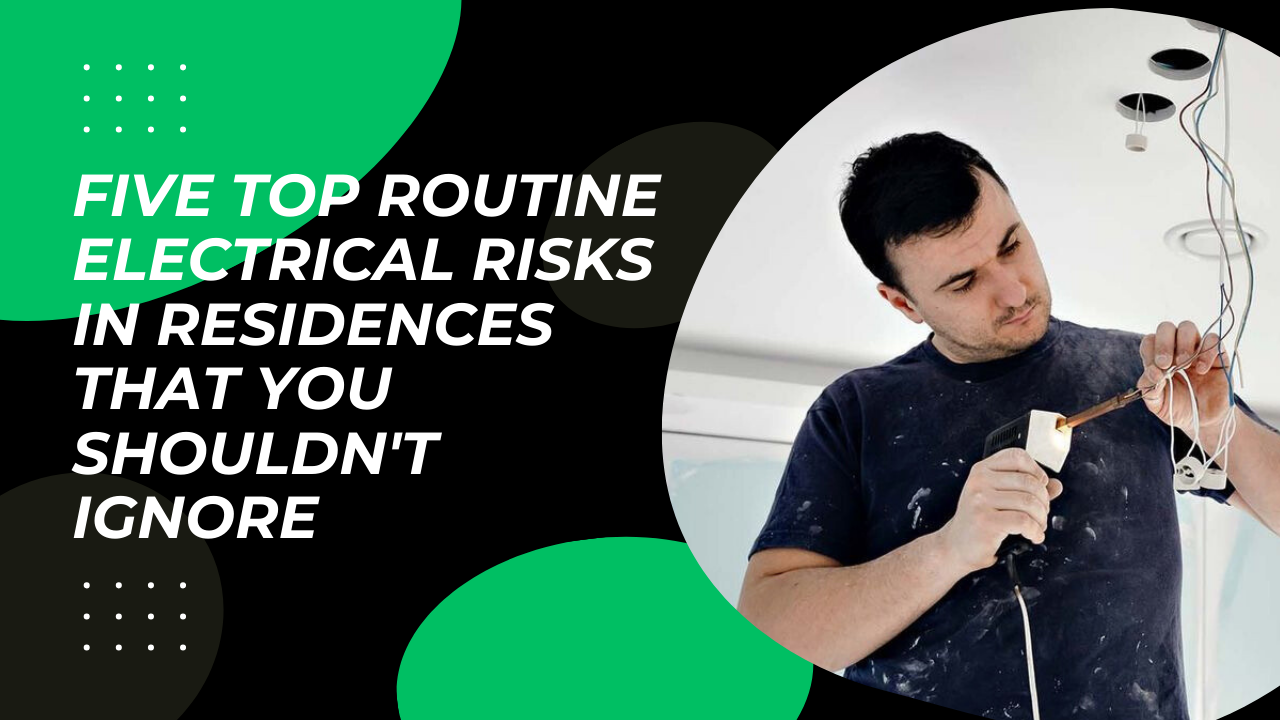It's simple to approach daily living at home with a laid-back, easygoing attitude. But despite our greatest efforts, emergencies still exist. Protecting loved ones from the risk of fire and electrocution requires a keen eye and a little common sense.
So how do you get started? There are several factors to take into account, including the age of your house, how you obtain power, and the appliances you use. Nearly 40% of all house fires in North Lakes, Queensland, are reportedly caused by electrical risks and broken appliances, making safety around these possible hazards critical and even time-sensitive. We're going in-depth on a few of the most prevalent yet harmful electrical hazards that can be discovered in and around the house. By doing so, you may put the essential safeguards in place to protect your family as well as your safety and maintain your carefree and laid-back attitude towards home life.
- Wet Hair and Hands
Do you or a beloved one have a habit of grabbing the hairdryer as soon as you step out of the shower? There is a danger there. A wet body, wet hands, and wet hair all make good conductors of electricity. If touching electrical devices, switches, power boards, and extension cables while wet or moist, there is a risk of receiving an electric shock. Don't do that, then! Before handling anything with an electrical connection, properly dry off. Whether from rainfall, splashing, or spills, gadgets and switches subject to water run the same risks. Additionally, water hastens the oxidation of metals, which raises the temperature of appliance parts and increases their danger of catching fire.
- Out-Of-Date Electrical Wiring
Nothing is more dangerous than failures brought on by old electrical lines, which are infamous for causing damage to older homes without regular maintenance work. Older homes could have defective grounding systems and wiring with worn-out or subpar insulation. When exposed to flammable materials, defective insulation on wiring and out-of-date grounding can provide an electrical shock if handled. Thanks to contemporary technologies built with health and safety in mind, electrical wiring has advanced significantly.
However, wiring has a finite lifespan. The typical homeowner has no simple method for locating hidden wiring that is damaged. Before making a deposit, you should have the wiring in any North Lakes, Queensland homes built more than 30 years ago and any home built before 1980 carefully inspected by a professional electrical inspector.
- Curious Children
As any parent will attest, there is no one more curious than kids. Additionally, the location of power outlets puts young toddlers at risk of burns and electric shock. Electrical outlets are one of the largest electrical hazards in the home, whether it is from constantly switching the switch or attempting to place objects into the sockets. Until the kids are old enough to be educated otherwise, finding safe covers for exposed power points is imperative. Most major retailers have inexpensive plastic covers that can be used to prevent any curious toddler from inadvertently injuring themselves.
- Using Too Many Power Boards
Power boards are an excellent way to increase the electrical network, but they can also quickly catch fire. Each PowerPoint has a maximum amperage rating, although it is still possible for it to pull more electricity through the outlet. Power boards are therefore the most straightforward source of overloaded circuits. Overloading a circuit, which happens more frequently in older homes, can result from plugging in too many items or utilising only a few that require high amps. Therefore, just because a power board has eight ports doesn't necessarily mean that it can power eight gadgets at once.
A kill switch should be installed in your switchboard to turn off electricity to a circuit that is overloaded. However, there is still a chance that the board will heat up and catch fire, notably if it is a less expensive power board from a dubious manufacturer. Have a licenced electrician instal power points and boost your switchboard if you need more electricity access.
- Using Extension Cords in a Daisy Chain
Daisy chaining is the process of connecting several extension cords to extend one's reach. Daisy chaining is not advised, despite the advantages, it has in terms of practicality. The electrical resistance rises when several extension cables are connected in series. This can cause one or more cords to heat up, possibly harming the insulation and starting a fire.
The less voltage that reaches the gadgets at the end of the adapters, the more likely a fault may occur and trip the breaker at your switchgear. Daisy chaining is typically prohibited on construction sites for concerns about safety and health. Why then would you put up with less at home?
Conclusion
Electrical safety implementation is essential. even within the house. To ensure health and wellbeing, it helps to have the appropriate tools and perspective. Electrical hazard concerns can be greatly decreased with a few straightforward precautions, which should ease your mind and allow you to resume your carefree, easygoing way of life.
